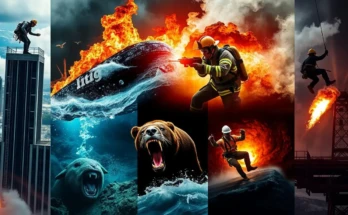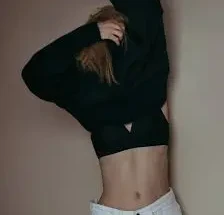Okay, movie buffs and fashion enthusiasts! Have you ever been so enthralled by a character’s fashion sense in a film? Fashion is more than simply fabric and thread in Korean films; it’s a potent storytelling device, a visual shorthand for individuality, and occasionally a moment so memorable that it becomes ingrained in our collective memory. Prepare to be mesmerized by some of the most memorable fashion moments to ever grace Korean cinema.
Think about it – what’s the first thing that strikes you about a character? Often, it’s their clothes. In Korean movies, this is amplified. Costume designers meticulously craft wardrobes that not only fit the era but also speak volumes about a character’s social standing, emotional state, and even their inner turmoil.1 It’s like a silent language woven into every scene.
Beyond Aesthetics: Fashion as a Narrative Device
Forget just looking pretty (though they often do!). In Korean cinema, fashion choices are deliberate. A stark white dress in a dark thriller? A meticulously tailored suit in a gangster flick? These aren’t random choices; they’re visual cues that deepen our understanding of the story and the characters inhabiting it.
Iconic Looks That Left a Lasting Impression
Over the years, Korean movies have gifted us with some truly unforgettable fashion moments. These aren’t just stylish outfits; they’re ingrained in the cultural consciousness, referenced in other media, and continue to inspire even today.
1. Choi Min-sik’s Leather Duster in “Oldboy” (2003): The Emblem of Vengeance
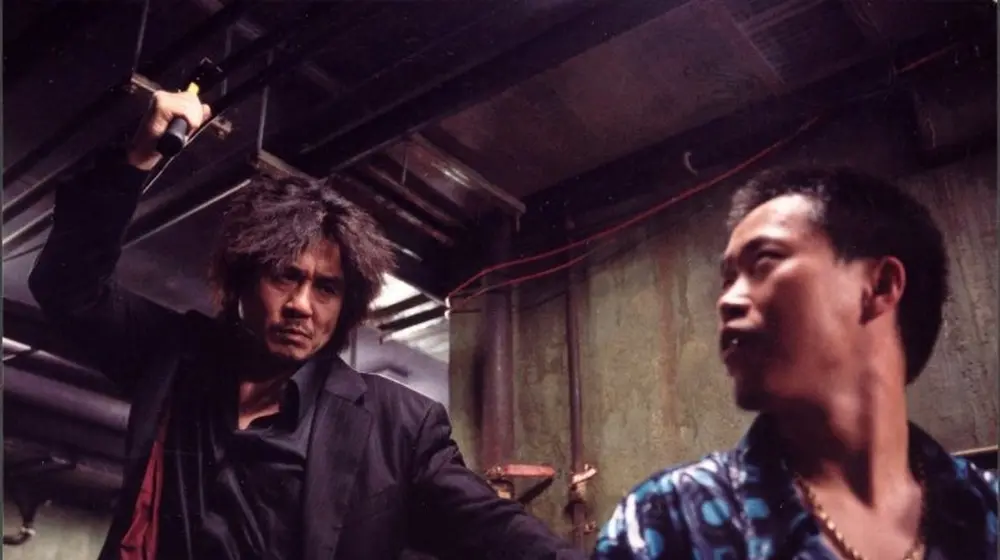
Think “Oldboy,” and you probably picture Oh Dae-su, disheveled but undeniably iconic in his long, brown leather duster. This coat isn’t just outerwear; it’s a symbol of his isolation, his simmering rage, and his relentless pursuit of vengeance. It’s a visual representation of his hardened exterior and the years of captivity he endured.
The Weight of Leather: Symbolism in Every Stitch
The worn texture and the almost imposing length of the coat add to the character’s mystique and the film’s dark atmosphere. It’s a garment that carries the weight of his suffering and his unwavering determination.
2. Bae Doona’s Punk-Goth Rebellion in “Sympathy for Mr. Vengeance” (2002): Expressing Inner Turmoil
In Park Chan-wook’s dark and disturbing “Sympathy for Mr. Vengeance,” Bae Doona’s character, Cha Young-mi, embodies rebellion and inner pain through her punk-goth aesthetic. Her dark clothing, piercings, and unconventional hairstyles visually communicate her alienation and her involvement in the film’s tragic events.
Fashion as a Cry for Help: Visualizing Anguish
Her style isn’t about looking fashionable; it’s about expressing a deep-seated anguish and a rejection of societal norms. It’s a visual manifestation of her character’s troubled soul.
3. The Elegant Hanboks of “The Handmaiden” (2016): A Symphony of Silk and Secrets
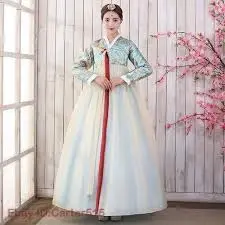
Park Chan-wook returns with the visually stunning “The Handmaiden,” where the traditional Korean hanboks are elevated to an art form.2 The intricate embroidery, the vibrant colors, and the flowing silhouettes not only showcase the beauty of Korean traditional attire but also play a crucial role in the film’s themes of deception and desire.
Layers of Meaning: Unveiling Character Through Clothing
Each hanbok, with its specific colors and patterns, hints at the characters’ social status, their hidden intentions, and the complex relationships between them.3 The clothing becomes another layer of the film’s intricate narrative.
4. Song Kang-ho’s Everyman Style in “Parasite” (2019): The Uniform of Social Class
In Bong Joon-ho’s masterpiece “Parasite,” the fashion choices of the Kim family are deliberately understated yet powerfully symbolic of their social class. Their often-worn, slightly worn-out clothes highlight their economic struggles and their attempts to blend into a wealthier world.
The Unseen Uniform: Clothing as a Marker of Inequality
Their clothes, while seemingly ordinary, serve as a constant visual reminder of the social divide that the film explores. It’s a subtle yet potent commentary on class and aspiration.
5. Jun Ji-hyun’s Effortless Chic in “My Sassy Girl” (2001): Defining a Generation’s Style
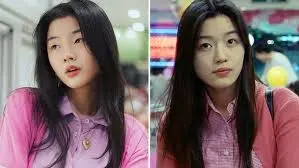
Jun Ji-hyun’s character in the beloved rom-com “My Sassy Girl” became a style icon with her seemingly effortless yet undeniably cool outfits.4 From her oversized sweaters to her casual sneakers, her fashion resonated with a generation for its relatable and chic vibe.
The Cool Girl Aesthetic: Fashion That Felt Real
Her style wasn’t about high fashion; it was about comfortable, everyday pieces worn with a certain attitude that made her character so endearing and influential.
6. The Gangster Swagger of “A Bittersweet Life” (2005): Sharp Suits and Silent Threats
Kim Jee-woon’s stylish noir “A Bittersweet Life” showcases the sharp and menacing fashion of the gangster world. Lee Byung-hun’s impeccably tailored suits and slicked-back hair exude an aura of quiet power and impending violence.
Dressing the Part: Fashion as a Weapon
Their sharp attire isn’t just about looking good; it’s part of their intimidating presence, a visual representation of their status and their dangerous profession.
7. Gong Hyo-jin’s Bohemian Flair in “Crush and Blush” (2008): Expressing Quirky Individuality
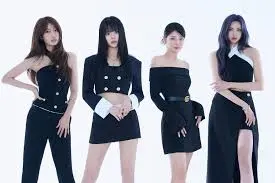
Gong Hyo-jin is known for her unique and often quirky sense of style, and it’s on full display in “Crush and Blush.”5 Her character’s bohemian-inspired outfits, with their mix of patterns and textures, perfectly reflect her eccentric personality and her unconventional approach to life.
Fashion as a Reflection of Inner Eccentricity
Her clothing choices are a visual representation of her character’s offbeat charm and her refusal to conform to societal norms.
8. The Historical Grandeur of “Masquerade” (2012): Royal Robes and Political Intrigue
In the historical drama “Masquerade,” the opulent royal robes and traditional garments are a feast for the eyes. The intricate details and the rich colors not only depict the grandeur of the Joseon dynasty but also highlight the power dynamics and political intrigue at play.
Dressing the Crown: Fashion as a Symbol of Power
The majestic attire underscores the weight of the crown and the responsibilities of the characters who wear it, both the king and his humble look-alike.
9. Tilda Swinton’s Enigmatic Elegance in “Snowpiercer” (2013): The Uniform of Authority
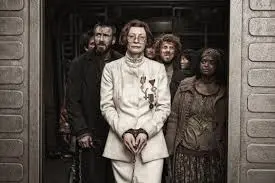
While a co-production, Bong Joon-ho’s “Snowpiercer” features Tilda Swinton’s unforgettable portrayal of Minister Mason, whose severe and almost bizarre fashion perfectly embodies her character’s authoritarian nature and her rigid adherence to the train’s social hierarchy.
Fashion as a Tool of Oppression: Visualizing Control
Her outlandish yet meticulously structured outfits serve as a visual representation of the oppressive social system within the train.
10. The Modern Sophistication of “Burning” (2018): Subtle Style with Underlying Tension
Lee Chang-dong’s “Burning” features a more understated yet equally impactful approach to fashion. The characters’ modern and often minimalist clothing reflects their contemporary lifestyles while subtly hinting at the underlying tensions and mysteries of the narrative.
Style in Subtlety: Fashion Reflecting Inner Worlds
Their seemingly simple clothing choices contribute to the film’s overall atmosphere of quiet unease and the elusive nature of its characters.
From Humble Beginnings to Global Phenomenon: Roots of Korean Action Cinema
The Enduring Legacy: Fashion That Transcends the Screen
These memorable fashion moments in Korean movies aren’t just fleeting images; they’ve become part of the cultural landscape, influencing trends, inspiring artists, and deepening our appreciation for the power of visual storytelling.
Inspiration for Designers and Fashion Enthusiasts
The creativity and symbolism behind the costumes in Korean films often serve as inspiration for fashion designers and enthusiasts around the world.
Cementing Character Identity in Popular Culture
Iconic outfits become synonymous with the characters who wear them, solidifying their place in cinematic history.
A Testament to the Art of Costume Design
These moments highlight the crucial role of costume designers in bringing characters to life and enhancing the storytelling process.
Conclusion: A Visual Feast of Storytelling
From the gritty realism of a leather duster to the opulent beauty of a hanbok, fashion in Korean movies is a powerful and often unforgettable element. It’s a visual language that speaks volumes, enhances character development, and immerses us deeper into the cinematic world. So, the next time you watch a Korean film, pay close attention to what the characters are wearing – you might be surprised at the stories their clothes are telling!
A Sunset for Liminal Youth | Burning (2018) – Bright Wall/Dark Room
Unique FAQs:
1. How do costume designers in Korean movies collaborate with directors to create impactful fashion moments?
The collaboration between costume designers and directors is crucial. They work closely to understand the director’s vision for the characters and the overall tone of the film. This involves in-depth discussions about character backgrounds, emotional arcs, and the symbolic meaning that clothing can convey. The designer then translates these ideas into tangible wardrobes that align with the director’s artistic goals.
2. Are there specific Korean traditional garments that are frequently used to convey particular meanings in movies?
Yes, the hanbok, Korea’s traditional attire, is rich with symbolism.7 Colors, patterns, and even the fabric can denote social status, marital status, and significant life events.8 For example, vibrant colors were often worn by royalty, while more muted tones were common among commoners.9 Specific embroidery or embellishments can also carry symbolic weight, adding layers of meaning to a character’s appearance in historical dramas.
3. How has the rise of K-pop and Korean movies influenced the fashion seen in Korean movies?
The global popularity of K-pop and Korean dramas has undoubtedly influenced the fashion trends seen in contemporary Korean movies. The stylish and often trend-setting outfits worn by idols and drama actors have spilled over into film, reflecting a more modern and globally conscious aesthetic. This cross-pollination of styles has contributed to the visual appeal of Korean cinema on an international stage.
4. Do Korean movies often use fashion to highlight the contrast between different social classes or characters?
Absolutely. Fashion is a powerful visual tool for depicting social disparities. Characters from lower socioeconomic backgrounds are often dressed in simpler, more worn clothing, while those from wealthier classes sport more refined and expensive attire. This visual contrast immediately communicates the power dynamics and social divides within the film’s narrative, as seen effectively in movies like “Parasite.”
5. Beyond just looking good, how does fashion contribute to the overall atmosphere and mood of a Korean movie scene?
Fashion plays a significant role in setting the atmosphere and mood. Dark, somber clothing can enhance a sense of tension or tragedy, while bright, vibrant colors can contribute to a more lighthearted or romantic feel. The texture and style of the clothing can also evoke a particular time period or social environment, immersing the viewer more fully in the film’s world. Even subtle details like the way a character wears their clothes can hint at their emotional state or intentions.
